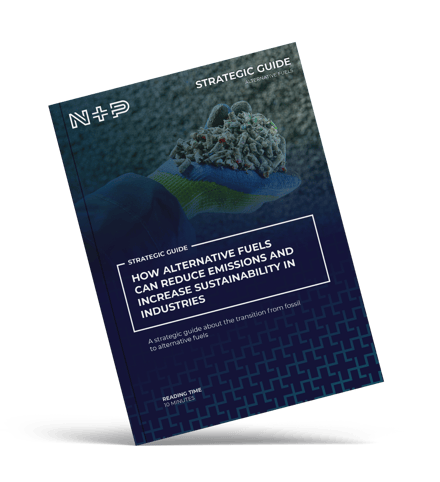SRF as the new energy source
Solid Recovered Fuel:A Sustainable Alternative to Fossil
Solid Recovered Fuel (SRF) is a fuel that is derived from waste materials, which have been processed to produce a high-energy fuel. SRF is produced by sorting and processing waste materials, such as paper, plastic, and wood, and then shredding and drying them. The resulting material is then treated to remove any contaminants and is then compressed into dense pellets or briquettes.

What is Solid Recovered Fuel (SRF)?
SRF is an alternative to fossil fuels such as coal, oil, and gas, and can be used in power plants, cement kilns, and other industrial applications. SRF has a higher energy content than many traditional fuels and can be used to replace fossil fuels, reducing greenhouse gas emissions and reducing reliance on fossil fuels.
The production of SRF begins with the sorting of waste materials. This can include municipal solid waste, industrial waste, construction waste, and commercial waste. The waste is sorted into different categories, such as paper, plastic, and wood, and any non-combustible materials are removed. The materials are then shredded and dried to reduce the moisture content.
Once the materials are dried, they are processed to remove any contaminants, such as metals or glass. This is important to ensure that the final product is of high quality and does not contain any harmful substances. The resulting material is then compressed into dense pellets or briquettes using a hydraulic press.
Advantages of using SRF as a renewable energy source
SRF has a number of advantages over traditional fossil fuels. It is a renewable energy source, which means that it can be produced indefinitely, unlike fossil fuels, which are finite resources. SRF also has a lower carbon footprint than many traditional fuels, as the production process produces fewer greenhouse gas emissions than the extraction and processing of fossil fuels.
In addition to its environmental benefits, SRF also has economic benefits. The production of SRF creates jobs in the waste management and energy sectors and can provide a reliable source of energy for industrial processes.
Adoption of SRF in Europe and beyond
SRF has been widely adopted in Europe, where strict environmental regulations have driven the development of the waste management industry. In recent years, there has been growing interest in SRF in other regions, such as North America and Asia, as more companies and governments seek to reduce their reliance on fossil fuels and move towards more sustainable energy sources.
In conclusion, SRF is a high-energy fuel that is produced from waste materials, which have been processed to remove contaminants and compressed into dense pellets or briquettes. SRF offers a renewable and sustainable alternative to fossil fuels, reducing greenhouse gas emissions and providing a reliable source of energy for industrial processes. With growing interest in sustainable energy sources, the use of SRF is likely to continue to expand in the coming years.

Ready to replace fossil fuels?
Read about reducing CO₂ emissions and discover a new perspective on decarbonizing global industries.
We repurpose waste
into sustainable resources.